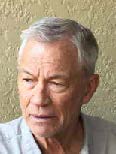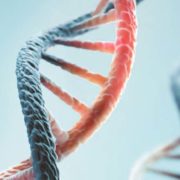BRING ON THE Fountain of Youth

Dave Trecker
By Dave Trecker
Ponce de Leon looked for it. St. Augustine claimed it. But so far no one has found it, though not for lack of trying.
We’re talking, of course, about the elusive Fountain of Youth and its elixir that staves off aging.
Even without the elixir, we’re doing pretty well. Diseases have been conquered and medicine has smoothed out life. In Collier County we boast average life spans that are among the longest in the country. But even here we can’t stop aging. We can eat well, exercise, take on mind-expanding activities, but we can’t turn back the clock – at least not yet.
But we’re getting closer. Research into aging has picked up steam, drawing on genomics, epigenetics and that old standby, gene therapy.
It’s tough research, and costly. But the returns, in terms of decades of additional productivity and reduced healthcare costs, would be enormous.
The key is to slow aging of our cells. Scientists at Harvard Medical School found that certain expressed-gene markers promoted muscle, bone mass and sight loss in young mice. In other words, they caused aging. Wipe away those markers, the researchers posited, and you can reboot the cells. And it’s happening.
Scientists at the Salk Institute were reported in the Wall Street Journal to have found that the lifespan of mice suffering from premature aging could be extended by 30% by turning on four genes that took out the epigenetic markers. At Harvard, researchers turned on three related genes in blind mice, rejuvenating the optic nerve cells and restoring sight.
Other equally dramatic advances have been made. Scientists at Stanford and the University of California San Francisco found that blood in young mice has regenerative cell power that promotes neuron growth and, in turn, memory retention. This has triggered studies of chemicals that may slow progression of Alzheimer’s disease.
In a related approach, gene therapy is being applied to stall development of age-related diseases, particularly those involving heart and kidney function. Success in mice has triggered studies in dogs. Humans could be next.
For years food was thought to play a role. Best known is the antioxidant resveratrol, said to be responsible for the “French paradox” – fighting aging by drinking red wine. Another is beta carotene, a potent antioxidant found in carrots. But neither resveratrol nor beta carotene showed promise in clinical trials.
In my working days, when the “nutraceutical” craze was at its peak, we found that red peanut skins had substances that were effective antioxidants.
Today the approach is more scientific. In particular, researchers are studying senescent cells – cells that no longer divide, but don’t die – as indicative of aging. Chemicals that target those cells are being tested in the United States, Israel and the Netherlands.
And to reduce cost and speed testing, scientists are focusing on therapeutics whose safety has already been proven. An example is metformin, a drug approved for Type 2 diabetes. A Welsh study showed that diabetics taking metformin lived longer than non-diabetics who did not take the drug.
But how about the Hail Mary pass? How about actually turning back the clock? We may be getting close. In a landmark study, scientists at Harvard and UCLA recently treated nine patients with a cocktail of growth hormone, DHEA steroid and metformin. The result was an epigenetic age reversal, trimming two years off their biological ages.
So things look promising. But don’t cancel your insurance policy just yet. There’s a long way to go. Anti-aging drugs are at least 10 years from the market, and probably much longer.
In the meantime, what can we do to stay young? Judy Campisi of the Buck Institute for Research on Aging says, “Exercise, don’t smoke … and choose your grandparents wisely.”




Leave a Reply
Want to join the discussion?Feel free to contribute!